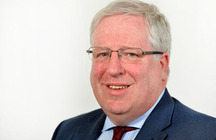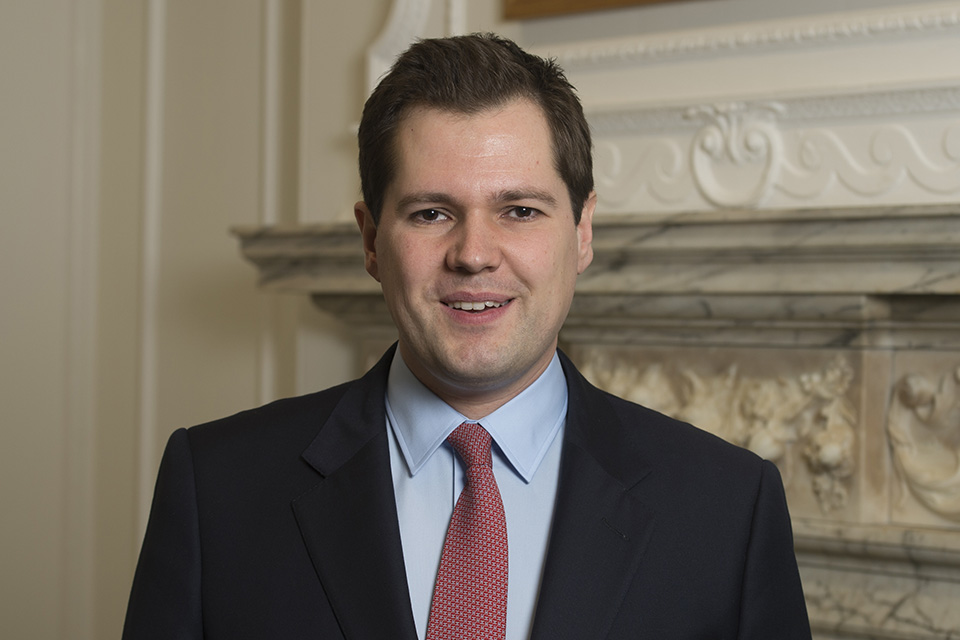Patrick McLoughlin – 2015 Statement on HS2
Below is the text of the statement made by Patrick McLoughlin, the Secretary of State for Transport, on 30 November 2015.
HS2 and the Northern Powerhouse
Good strategic transport links are central to the success of our country. This government — more than any before — is committed to making sure we have the infrastructure we need to deliver economic growth and rebalance the country’s economy, not just in the immediate future, but for the long term.
I am therefore making announcements today (30 November 2015) on how transport is continuing to deliver the Northern Powerhouse through HS2 and the Northern transport strategy.
HS2
HS2 is a key part of the future of our country’s railways. Last week’s Spending Review announcement confirmed the government’s commitment to the scheme. This is a big step forward for HS2 and the creation of a Northern Powerhouse. This gives funding certainty to HS2. It also gives more certainty to the towns and cities that would be served by HS2 that they can plan for its arrival, and to the private sector that there will be future investment opportunities.
HS2 will not be a separate, standalone railway. It will be the new backbone of our national rail network, with HS2 services running from London and Birmingham to cities in the north of England including Manchester, Leeds, Liverpool, Newcastle and on to Scotland. It will not only deliver significant journey time savings, but also much needed additional capacity and increased connectivity. Private sector companies will be able to bid to run HS2 services, and will also be able to use this capacity to offer a wider range of services.
We are making good progress with HS2 Phase One (from London to Birmingham). The hybrid Bill for this part of the railway is proceeding through Parliament and we are aiming to achieve Royal Assent by the end of 2016, so that construction can begin in 2017.
In his reports, ‘HS2 plus’ (March 2014) and ‘Rebalancing Britain’ (October 2014), Sir David Higgins recommended that we seek to build the section of the route to Crewe more quickly to deliver further benefits to the north sooner. We agree that we should realise the benefits of HS2 as soon as possible. I am therefore announcing today my decision on the section of the route from Fradley in the West Midlands to Crewe — now referred to as ‘Phase 2a’. We intend to accelerate Phase 2a so that it opens 6 years earlier than planned, in 2027. This will bring more capacity and faster HS2 services to the north-west of England, including Crewe, Liverpool, Manchester and Scotland much sooner than originally planned. Our plans will help to support growth and deliver jobs more quickly.
Powers to build this section of the route will be sought through a separate hybrid Bill which I intend to introduce to Parliament in 2017. HS2 Ltd have now procured Professional Services Consultants (PSCs), for the purposes of supporting the hybrid Bill development.
In the light of my decision on the HS2 route from the West Midlands to Crewe I am also today issuing safeguarding directions for that part of the route, having considered responses to the November 2014 consultation on this. The directions will ensure that new developments in this corridor do not affect the ability to build or operate Phase 2a or lead to excessive additional costs. Safeguarding also triggers the statutory blight regime. Qualifying owner-occupiers whose property is within the safeguarded zone will have the right to ask the government to buy their property by serving a blight notice. We are committed to assisting people affected by HS2. All those living within the safeguarding zone will receive a letter informing them about potential entitlements. And I am also today launching a consultation on a wider package of assistance measures for owner-occupiers, which go well beyond what we are required to do by law, for those living along this section of the route, as we have already done for Phase One.
We set out our initial preferred route for Phase Two of HS2 in January 2013 and later that year conducted a public consultation exercise seeking the public’s views on the route. Today, we have published the independent analysis by Ipsos MORI of all the responses to the 2013 Phase Two route consultation. My route decision on Phase 2a takes account of the consultation responses regarding that section of the route; and the command paper also responds to the cross-cutting issues raised.
We continue to progress plans for the rest of the HS2 Phase Two route. I welcome the way local authorities, most recently those in Leeds, the Northern Gateway Partnership and the East Midlands, have come together to support HS2 plans in their areas. Further work is needed on the remainder of the Phase Two route before a decision can be taken. I intend to make a decision in autumn 2016, but today I can update the House on my thinking as follows:
Leeds: We have now received Sir David Higgins’ report on Leeds Station — which is also published today. It recommends an integrated design for the HS2 station, while maintaining a southerly route into the city. I am minded to agree with Sir David’s proposal.
South Yorkshire: Sheffield Meadowhall was the government’s preferred station location in the Phase Two route consultation. The evidence continues to suggest that this is likely to be the best way of serving the wider South Yorkshire region and we are working with the National Infrastructure Commission and Transport for the North on the possible interfaces with Northern Powerhouse rail. However, we acknowledge there are arguments in favour of a city centre location and continue to examine relevant analysis.
East Midlands: Sir David Higgins has confirmed that HS2 Limited recommends a hub station should be located at Toton. Toton is also supported by the East Midlands local authorities who are united behind this proposed location. The government therefore continues to support Toton as the best location for an East Midlands Hub. Last week the Chancellor announced growth funding to allow the area to start its planning for HS2. Part of this will be released this year, and the remainder would be released when a decision is made.
Manchester: Manchester Piccadilly continues to look like the right location for HS2’s Manchester terminus. To maximise its potential to support economic growth in the region, it will be important to ensure effective co-ordination with the development of Northern Powerhouse rail to transform east-west links across the north of England. We are continuing our work through Transport for the North, and with the National Infrastructure Commission, to explore synergies and integration between the schemes, in order to develop the right rail infrastructure that delivers growth across the whole of the north of England.
We also remain of the view that a Manchester Airport station is likely to be the right option, subject to agreeing an appropriate third party funding contribution to the costs.
In 2014, Sir David Higgins recommended that HS2 serve a north-west hub station at Crewe. While I am not taking decisions on Crewe hub today, I do support the vision for a Crewe hub. Work is ongoing I intend to make further announcements in 2016, and any Crewe hub scheme will be subject to consultation. To support the work that the Northern Gateway Partnership is doing to develop growth and regeneration plans ahead of a decision I am releasing part of this funding this year.
I have asked HS2 Ltd to explore options for how we might best serve Stoke and Macclesfield, including through classic-compatible trains via Handsacre Junction. Handsacre Junction is part of Phase One and will allow HS2 trains to serve Stafford.
Scotland will benefit from reduced journey times as soon as Phase One opens (3 hours 56 minutes from London to Glasgow, compared with a typical journey time of 4 hours 31 minutes at present). Accelerating delivery of Phase 2a between the West Midlands and Crewe will further reduce the journey time from London to Glasgow to 3 hours 43 minutes. The full “Y” network will provide faster services from London to both Glasgow (3 hours 38 minutes) and Edinburgh (3 hours 39 minutes). The UK government and the Scottish government are working closely together to consider options to further reduce journey times. We hope to make a statement on next steps in the New Year.
I have not taken any decision on the remainder of the Phase Two route. We will respond in full to consultation responses relating to the rest of the Phase Two route when a route decision is taken in 2016.
Copies of the command Paper: High Speed Two: east and west — the next steps to Crewe and beyond and other accompanying documents have been made available in the libraries of both Houses and can be found on GOV.UK.
– High Speed Two: east and west — the next steps to Crewe and beyond command paper
– HS2 Phase Two: from the West Midlands to Leeds and Manchester document collection
– HS2: government response to the Phase 2a safeguarding consultation command paper
– HS2 Phase 2a: strategic case
– HS2 Phase 2a: economic case
– HS2: supplement to the October 2013 strategic case
– HS2: rail alternatives to Phase 2a
– High speed rail expenditure report 2014 to 2015
The cost of HS2 has not changed since the Spending Review 2013. The Spending Review 2015 confirmed an overall budget of £55.7 billion in 2015 prices. This is consistent with the £50.1 billion (in 2011 prices) set in 2013, but has been uprated to take account of inflation.
Transport for the North and the northern transport strategy
Today, jointly with Transport for the North, we are publishing a progress report on the Northern Transport Strategy, which includes updates on our progress across the full range of the strategy, including international connectivity, freight, smart and integrated ticketing, strategic roads and Northern Powerhouse rail. The fast, frequent, reliable and comfortable rail service we plan will underpin the Northern Powerhouse economy. Copies of the report The northern transport strategy: autumn report have been placed in the libraries of both Houses and can be found on GOV.UK.
The government has also taken steps to support the development of Transport for the North as an organisation that represents the whole of the north of England and can speak to government with one voice on the region’s transport priorities.
Last week’s spending review committed £50 million of funding over this Parliament to help Transport for the North drive forward plans to transform the north’s transport links and build a single regional economy.
Today, I am delighted to announce, jointly with Transport for the North, the appointment of John Cridland as the new independent Chair of the Transport for the North Partnership Board. Together with his Chief Executive, David Brown, John Cridland will have the responsibility for delivering the Northern Transport Strategy, working closely in partnership with Lord Adonis and the National Infrastructure Commission.
Following advice from the National Infrastructure Commission in March 2016, schemes such as Northern Powerhouse rail will have access to a brand new £300 million national Transport Development Fund.


